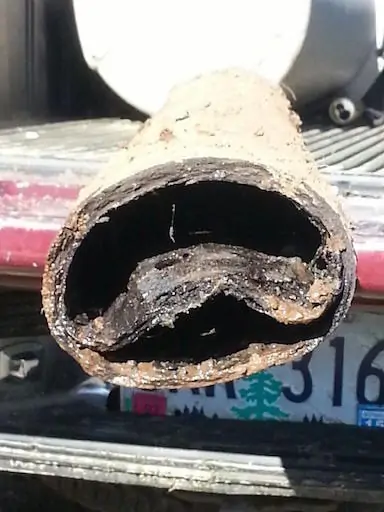What is Orangeburg Pipe?
Well now, I’m glad you asked that question. The history of plumbing is a long one, stretching back thousands of years to the Minoans and the Greeks and Romans that came after them. In that time span, mankind has used may different materials for their water and sewer works.

Finding the proper material for any engineering application always involves trading off different constraints and desires. In particular, we want sewer pipes that are strong, durable, light-weight, easy to work with, easy and inexpensive to manufacture. The list goes on… When the industry as a whole believes it’s found a good, cost-effective solution, it tends to get popular fast.
Jon Schladweiler, the Historian of the AZ Water Association, defines Orangeburg pipe as ground cellulose (wood) fibres bound together with a special water resistant adhesive, and, thereafter, impregnated with liquefied coal tar pitch. In other words, it’s basically ‘tar paper’. The first known use of Orangeburg pipe was in 1865, when a 1.5 mile pipeline was laid in the Boston area to carry water. In the later part of the 19th and the early part of the 20th century it was used frequently as an electrical conduit in buildings, including such landmarks as the Empire State Building!
After WWII, there was a building boom and an enormous need for lightweight, inexpensive, easy to work with piping material for the new housing developments being built everywhere. Manufacturers started making a thicker-walled, heavier “Orangeburg Pipe” for use as a sewer and drain pipe and it proved quite popular. And there were plenty of reasons for that popularity! In our jobs, we’ve occasionally found pieces of ‘almost new’ Orangeburg in places where it’s been sheltered from the elements for decades, and it looks great. It’s lightwight, sturdy, almost a perfect material.
Unfortunately, there is a catch. Orangeburg is great when it’s new, but at the end of the day it’s just paper and tar. Over decades of wear, with the weight of the soil over it, the water in the soil around it, as well as the liquids running through it, the jostling and pressure of greedy tree roots–Orangeburg does not age well. It collapses, bubbles, deforms, and changes shape. Rocks and gravel, roots and just plain old age wear holes in it. When that happens, you can’t repair it. After 50 or more years, there is nothing left to repair! The only real solution is to replace it.
If you think you might have Orangeburg pipe in your sewer, and a lot of people in this area still do, give us a call at 541-343-9339! We’ve got decades of experience with it. We can evaluate your situation and tell you if you can get a few more years out of your pipe or whether it’s just time to dig it up and start over. After all, 50 to 70 years isn’t a bad lifetime for a sewer line and, with luck and a little bit of skill from Petersen Plumbing, the replacement could last that long too!
Useful Sewer and Drain Articles from Petersen Plumbing
- PLEASE don't flush antibacterial wipes! TL,DR - Experts tell us that we should only put two things down a toilet - human waste (of course) and toilet paper. NOTHING ELSE. Here's a helpful List to print out and post near your toilets.
- Put a Vent In It! A blocked vent pipe can cause almost as much trouble as a blocked drain! Here's what to look for if your drain starts surging and gurgling.
- Don't flush that! Out of sight is not out of mind when your drains clog! Some things should never go down your drain! Here's a helpful List of Do's and Don'ts to print out - from Petersen Plumbing.
- Spring is coming! There are certain plants that you do not want growing over your septic system and sewer pipes.
- What on earth is Orangeburg Pipe and why should you care?!